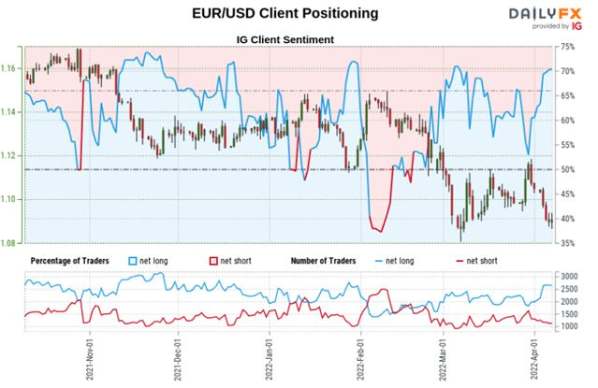EUR/USD fails to extend the series of lower highs and lows carried over from last week as the European Central Bank (ECB) warns of a looming adjustment in the forward guidance for monetary policy, but the exchange rate may continue to give back the rebound from the yearly low (1.0806) as it continues to fall back from the 50-Day SMA (1.1145).
EUR/USD bounces back from a fresh weekly low (1.0897) as the account of the European Central Banks (ECB) March meeting reveals that “a large number of members held the view that the current high level of inflation and its persistence called for immediate further steps towards monetary policy normalisation.”
It seems as though the Governing Council is preparing to shift gears as “the three forward guidance conditions for an upward adjustment of the key ECB interest rates had either already been met or were very close to being met,” but the economic disruptions caused by the Russia-Ukraine war may force President Christine Lagarde and Co. to delay normalizing monetary policy as the central bank acknowledges that “the euro area could fall into technical recession in the summer quarters.”
As a result, the ECB may carry out a wait-and-see approach while it winds down the Asset Purchase Programme (APP) as “the calibration of net purchases for the third quarter will be data-dependent,” and the diverging paths between the Governing Council and Federal Reserve may continue to drag on EUR/USD as Chairman Jerome Powell and Co. plan to“begin reducing its holdings of Treasury securities and agency debt and agency mortgage-backed securities at a coming meeting.”
In turn, EUR/USD may continue to exhibit a bearish trend in 2022 as it remains under pressure after testing the 50-Day SMA (1.1145), and a further decline in the exchange rate may fuel the tilt in retail sentiment like the behavior seen earlier this year.

The IG Client Sentiment report shows 68.72% of traders are currently net-long EUR/USD, with the ratio of traders long to short standing at 2.20 to 1.
The number of traders net-long is 2.13% lower than yesterday and 36.46% higher from last week, while the number of traders net-short is 1.59% higher than yesterday and 18.18% lower from last week. The jump in net-long interest has fueled the crowding behavior as 58.99% of traders were net-long EUR/USD last week, while the decline in net-short position could be a function of profit-taking behavior as the exchange rate bounces back from a fresh weekly low (1.0897).
With that said, EUR/USD may face headwinds throughout the year as the FOMC normalizes monetary policy ahead of its European counterpart, but lack of momentum to test the yearly low (1.0806) may keep the exchange rate within a defined range as it snaps the series of lower highs and lows from last week.
Leave a Reply